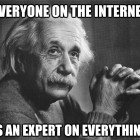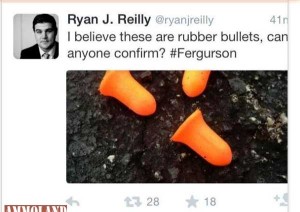
Sep 4, 2014
Social media has done a lot of good for society. I have reconnected with long lost friends. Because of it, I am writing on this blog today, and I have a way to advertise while I write. Also, everyone can participate in the conversation with their own soapbox to stand on, and they can share their opinion to anyone who will listen. On the downside, everyone can participate in the conversation with their own soapbox to stand on, and they can share their opinion to anyone who will listen. In the weeks since the tragic events in Ferguson Missouri, I have made a frequent statement on Twitter and Facebook that can be summed up as “everyone is an expert in public safety.” What I am talking about is the “should have” mentality that many have adopted.
Take, for instance, that now infamous moment in time outside of Detroit, Michigan where two paramedics were photographed allegedly posing and smiling. A friend of patient Jake Glover told the reporter that “you should be tending to someone who obviously needs your help, instead of worrying about taking a picture.” From that moment in time with her limited knowledge of procedure and patient care, she made that conclusion. Based on a picture. A snapshot of a moment in time.
Or how about an example that is much closer to home. There is something that happens on almost every call that I have ever done involving a 12-lead EKG. I like to call it “the stare.” The leads go on, someone pushes the “12-Lead” button, and everything stops. All of the providers on scene turn their attention towards the monitor and sit very still as they wait for it to start spitting out its treasure. Once that print starts, all motion around the patient seems to start back up with it. A number of years ago, I was caring for an unresponsive patient in a dimly lit apartment in a not-so-nice part of the city. The leads went on, and the 12-lead started doing its thing when a friend of the patient walked in the room and saw what he thought was a couple of paramedics just staring at an unconscious guy on the floor.
“What are you doing?! You should be helping him!” He yelled at us, as he started to take a step towards us. Thankfully, my partner thought faster than i did, stood up, and quickly explained to the man that we needed to figure out what was wrong with the patient before we could do anything for him. The man had his mind made up about what he thought should be happening probably based on some TV show, or story that he had heard from someone else. In the heat of the moment, people make up their mind pretty quickly. We “shouldn’t be” restraining patients the way that we do. Or we “should have” gotten to an emergency faster. Or we “should have” just taken them to the hospital.
As people on social media share their thoughts about just about any event from those Michigan medics, to the cops in Ferguson, and any situation in between, our job becomes just a little bit more difficult. Cameras are everywhere. People are able to videotape just about anything that happens in front of them in a moment’s notice. In fact, I was on a motor vehicle accident the other day and saw at least two or three bystanders with their phones out recording everything that was going on and people watch those videos and make up their minds about what people “should have” done.
Opinions are important. I share mine frequently, sometimes more frequently than some might like such as in the case of the Nashville, Tennessee firefighters a few weeks ago. However, when making an argument, people should try and back up what they say with facts. One of the other nice things about the internet is there is so much information at our fingertips twenty four hours a day, seven days a week. If we don’t know something the answer is just a Google away. The problem is though that people base their opinions far too frequently on the opinions of other misinformed people, and even misinformed media. When that happens, things start to get ugly.
The snowball effect that comes along with social media is becoming more and more evident. The rioting, protesting, and events in the past couple of weeks in Ferguson, Missouri make that very clear. Members of smaller media outlets were running live feeds on the internet night after night chronicling the events. Mainstream media outlets then set off in a race with them to get out information, trying to tweet and publish faster than their much smaller competitors were doing. This resulted in reporters from media outlets mistaking ear plugs for “rubber bullets” and almost being assaulted by bystanders based on the comments that they were making on camera.
Remember that it is up to us not individually but as an industry to do our best to educate the public about what we do. While reactive in nature, this is a mission that we need to adopt proactively. We need to be ready to get out there and use the media contacts that we have established. We need to get out into the community with the community leaders and try and help make people understand. While we will probably never completely squash the “should have” mentality that public safety so often encounters, we might just make a few of the calls that we run just a little bit easier.
Ultimately, let’s try and give the men and women in public safety a little bit of credit. None of us walk into work hoping for anyone to get hurt, bent on hurting someone, or looking to “make the news.” Instead of telling everyone what public safety professionals “should have” done, reach out, and get the opinion of someone who might know a bit better, or someone who might have been in a similar situation themselves. Having an opinion is fine, but getting educated is even better.

